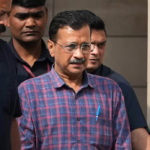Introduction of Delhi Chalo 2.0
As the year 2024 unfolds, the agrarian landscape of India is once again witnessing a fervent protest, reminiscent of the historical farmers’ agitation in 2020. In this article, we delve into the intricacies of the Delhi Chalo 2.0 march, highlighting its distinctive features and shedding light on the key points that differentiate it from its predecessor.

The Genesis of Delhi Chalo 2.0
- Why farmers are protesting now: In contrast to the 2020 protest against the contentious farm laws, the Delhi Chalo 2.0 is fueled by a renewed set of demands. Farmers, this time, are not just seeking the repeal of laws but are advocating for a legal guarantee to the Minimum Support Price (MSP) for all crops. Additionally, their demands include the implementation of the Swaminathan Commission’s formula, a full debt waiver for farmers, pension for farmers and laborers, and the withdrawal of cases against protesters from the 2020-21 agitation.
- Leadership Dynamics: Unlike the unified leadership witnessed in 2020 under the banners of Rakesh Tikait and Gurnam Singh Charuni, Delhi Chalo 2.0 is spearheaded by diverse unions. The Samyukt Kisan Morcha (Non-Political) and the Kisan Mazdoor Morcha have taken the reins, signaling a shift in the farmers’ union landscape. Factionalism within unions, notably the Bhartiya Kisan Union and Samyukt Kisan Morcha, has undergone changes, with new leaders like Jagjit Singh Dallewal and Sarwan Singh Pandher assuming prominent roles.
- Notable Absences: Two pivotal figures from the 2020 protests, Rakesh Tikait and Gurnam Singh Charuni, are conspicuously absent in the current agitation. This absence marks a departure from the previous leadership structure, introducing fresh faces like Jagjit Singh Dallewal and Sarwan Singh Pandher as the vanguard of the protest.
- Security Measures and Blockades: In anticipation of the Delhi Chalo 2.0 march, authorities have implemented stringent measures to prevent a repeat of the 2020-21 protests. Barbed wire, cement barricades, and strategically placed nails on roads have effectively sealed all routes to Delhi. Section 144 has been imposed in the capital, and the Haryana government has sealed its borders with Punjab, creating an impregnable barrier to the protesters.
- Government’s Response: Distinguishing itself from the delayed negotiations in 2020, the government initiated talks even before the commencement of the Delhi Chalo 2.0 march. Despite reports of accepting certain demands, such as withdrawing cases against farmers from the previous agitation, the government has not committed to a legal guarantee of MSP, leaving a critical aspect of the farmers’ demands unaddressed.

Conclusion
In conclusion, Delhi Chalo 2.0 unfolds against a backdrop of evolving leadership dynamics, new faces, and an altered set of demands. The protest’s distinctiveness lies not only in its objectives but also in the proactive security measures adopted by authorities. As the situation unfolds, it remains to be seen how the government responds to the multifaceted demands of the farmers, and whether Delhi Chalo 2.0 will etch its mark in the annals of India’s agrarian history.










